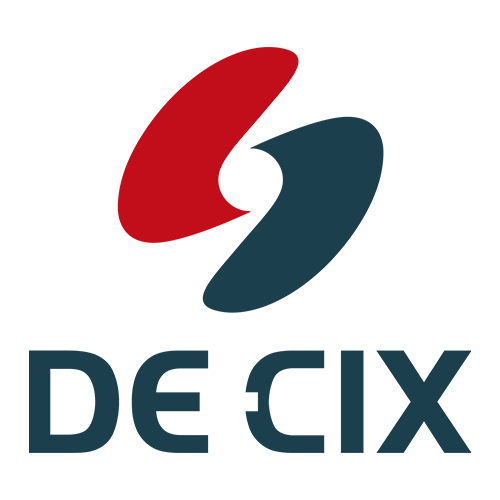Internet “Out of a Box”: Lowering Latency and Getting Ready for the Immersive Internet
Ivo Ivanov, CEO of DE-CIX explains what conditions need to be created to ensure that digital infrastructures are adequately equipped for future innovations. And he reveals what getting closer to the immersive Internet has to do with boxes.

©Khanisorn Chaokla | istockphoto.com
As we navigate the rapidly evolving digital landscape, the pursuit of seamless connectivity and unparalleled user experiences, such as the immersive Internet, has become our guiding beacon. Within this landscape, the pillars of low latency and innovative infrastructure solutions, such as Internet exchanges in boxes, have emerged as transformative forces that will shape the future of our connected world.
Low latency: A transformative force for the immersive Internet
Low latency is fundamental to enabling the immersive Internet, where near-instantaneous response times are essential. Latency, measured in milliseconds, is determined by the speed at which data travels from its source to its destination. Its importance is magnified in areas such as gaming, augmented reality (AR), and real-time applications, where split-second delays can disrupt the user experience.
Any gamers out there are probably deeply familiar with how frustrating and disruptive high latency can be. This illustrates the critical role that low latency plays in ensuring a seamless experience. Beyond gaming, applications such as autonomous driving and real-time manufacturing control demand ultra-low latency, often requiring responses in the low millisecond range.
The infrastructure required to achieve such low latencies involves decentralization. It entails expanding fiber optic networks, deploying data centers closer to users, and leveraging modern connectivity technologies like 5G and Low-Earth Orbit (LEO) satellites. At DE-CIX, we’re working on concepts like the “DE-CIX in a Box” Exchange; miniature Internet Exchanges strategically positioned near 5G towers or motorway junctions. These innovations aim to bring the infrastructure closer to users, enabling swift, real-time interactions. However, this transformative journey towards low latency and decentralized infrastructure faces challenges. The expansion of digital infrastructure, including data centers, is vital. The evolving landscape of data centers demands a rethinking of policies and practices to ensure sustainability and competitiveness, especially as digital infrastructures become indispensable for economic growth.
The role of data centers in cultivating a modern digital ecosystem
In Germany, for example, there are valid concerns about the future of data centers and their viability, especially in the wake of the Energy Efficiency Act. Many operators are understandably worried about the financial viability of data centers in the face of the stringent energy efficiency requirements of this act. This could potentially lead to a scenario where operators withdraw from Germany, affecting the country's digital infrastructure. The discussion surrounding data centers often carries a negative undertone. However, it's crucial to recognize that data centers serve as fundamental components within the digital infrastructure value chain. They are essential for cultivating and sustaining a modern digital ecosystem, which is undeniably the bedrock of economic growth, a facet that will be even more pronounced in the future.
Keeping with the German example, losing momentum in the realm of digital infrastructure could significantly hamper the country's ability to foster robust digital economic growth. What's imperative is a recalibration—a thorough reassessment—in both political discourse and public perception. While efficiency is a vital aspect, there exists a realm of potential through innovative approaches and leveraging alternative energy sources.
Efforts to create a more conducive environment, particularly regarding electricity pricing and regulatory frameworks, are necessary. An essential consideration here is the discrepancy in electricity prices among different countries. For instance, setting up data centers in regions with significantly cheaper electricity, such as Norway, might seem financially enticing. However, this approach poses challenges in ensuring the low latency crucial for seamless data transfer across borders.
Upholding a balance between efficiency, compliance, and performance requirements
The concept of digital sovereignty emerges prominently in this discourse. Data should ideally reside within the jurisdiction where it's generated. This isn't just about data protection and privacy; it's equally about ensuring optimal performance. As I stressed earlier, in our digital world, every millisecond counts, underscoring the newfound importance of latency as a critical currency. The re-evaluation of data center strategies needs to go hand in hand with a nuanced understanding of these complex intersections. Upholding a balance between efficiency, regulatory compliance, and performance requirements will be pivotal in steering Germany's digital infrastructure towards a sustainable and growth-oriented future.
It’s important to remember that low latency isn’t solely about gaming or entertainment. It's the bedrock for various applications, including telemedicine and AI-driven services. Achieving a latency level of less than 20 milliseconds is pivotal for the immersive Internet, where natural, real-time experiences are the goal. Because making those experiences natural means replicating the speed of human perception. To comprehend tactile information, our brain only needs 20 milliseconds, understanding visual cues takes less than 13 milliseconds and perceiving and interpreting auditory information requires less than a millisecond. So, the immersive Internet is going to require low-millisecond latencies to ensure an acceptable user experience and allow it to be successful.
This demands a robust infrastructure capable of handling ultra-fast responses in milliseconds across audio, visual, and interactive realms. This is where the “DE-CIX in a Box” exchanges come in. These need to be … well, everywhere, really. And we’re laying the groundwork for that. DE-CIX is deeply involved in this transformative journey, operating as a critical interconnection service provider across 54 global markets. We have already built exchanges with very lean setups in regions outside of the major cities. What I described earlier requires, of course, even more streamlined, even more agile set-ups. We are working on it and as soon as it’s needed, we will be ready.
Ivo Ivanov has been Chief Executive Officer at DE-CIX and Chair of the Board of the DE-CIX Group AG since 2022. Prior to this, Ivanov was Chief Operating Officer of DE-CIX and Chief Executive Officer of DE-CIX International, responsible for the global business activities of the leading Internet Exchange operator in the world. He has more than 20 years of experience in the regulatory, legal and commercial Internet environment. Ranked as one of the top 100 most influential professionals of the Telecom industry (Capacity Magazine’s Power 100 listing, 2021/2022), Ivo is regularly invited to share his vision and thought leadership in various industry-leading conferences around the globe.





